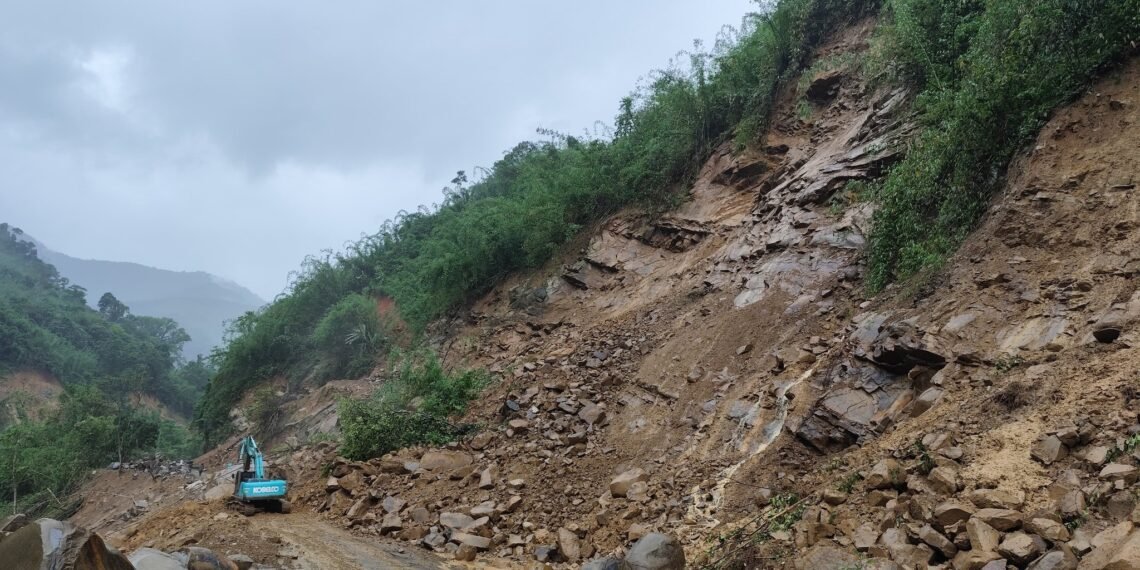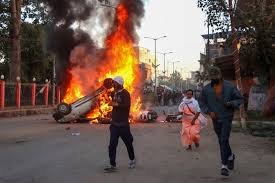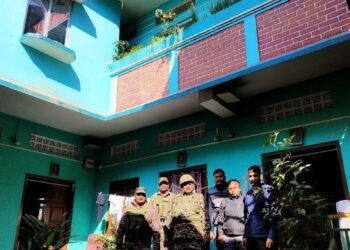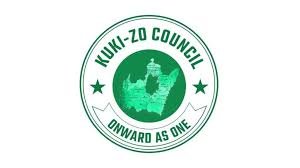As torrential rains trigger 93 landslides, blocking vital lifelines like NH-2 and NH-102B, Manipur’s Kuki-Zo communities confront a humanitarian crisis compounded by ethnic tensions and restricted movement.
BY PC Bureau
Torrential rainfall has unleashed devastating landslides across Manipur, severing key transport arteries and cutting off vulnerable hill communities. The crisis has reached a critical point for the tribal population in the hills, who are now effectively trapped, with no viable route to escape—even in life-threatening emergencies.
After a major landslide two days ago on National Highway 2 (NH-2) near Kohima cut off Manipur’s only dependable road link to Nagaland, fresh landslides have now rendered travel impossible on National Highway 102B—commonly known as Guite Road. NH-2 was the main route connecting Manipur’s hill districts like Kangpokpi to Dimapur airport, while NH-102B linked Churachandpur—Manipur’s second largest town and a Kuki-Zo stronghold—to Aizawl in Mizoram.
With both highways blocked, hill residents are stranded without access to either airport. Since the deadly ethnic clashes on May 3, 2023, which killed over 250 people, Kuki-Zo communities have been unable or unwilling to cross the heavily militarized buffer zone surrounding the Imphal Valley. The Imphal airport remains effectively inaccessible, and now, with NH-2 and NH-102B both unusable, these communities face complete isolation.
#Update
📍Nungdalan, near Sibilong, Tamenglong district.
~ 170km from Imphal.
Incessant rainfall have caused multiple landslides along Imphal-Jiri NH-37 route and goods laden trucks carrying essential commodities bound for Imphal are now stranded.@govt_of_manipur @RajBhavManipur pic.twitter.com/kWhGCa9pcI— Kanglei Chronicle (@Tongjei_Maril) June 1, 2025
Landslides along NH-102B, concentrated between Sinzawl and Khuanggin and between Sinzawl and Khawkawn, have halted all vehicular traffic. This highway, a lifeline for thousands in the hills, has seen countless vehicles stranded, disrupting the flow of essential goods such as food, fuel, and medicine. The Guite Road Chief Association (GRCA) has made an urgent appeal to the National Highways and Infrastructure Development Corporation Limited (NHIDCL) to clear the debris and restore connectivity.
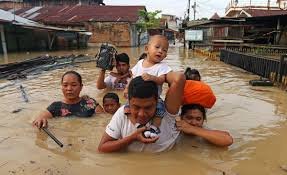 READ: Poppy, Timber, and Politics: The Digital Feud in Flood-Hit Manipur
READ: Poppy, Timber, and Politics: The Digital Feud in Flood-Hit Manipur
Further compounding the emergency, authorities report that a critical section of NH-2 collapsed near the Naga Heritage Village in Kisama two days ago, severing access to Dimapur airport—the only viable alternative to Imphal airport for hill residents. This collapse has isolated districts like Kangpokpi and other Kuki-Zo areas, leaving them cut off from medical aid and critical supplies.
Manipur government officials report an alarming 93 landslides across the state in just three days, largely isolating the region from the rest of India by road. Of Manipur’s three national highways, only NH-37, which connects Imphal to Silchar in Assam via Jiribam, has partially reopened. On Tuesday, authorities cleared debris and allowed limited movement of 111 supply-laden vehicles, each under armed convoy for protection. NH-102, which also connects Imphal to Dimapur via Kohima, remains severely damaged.
Hospitals in Churachandpur are already reporting shortages of medical supplies. Residents fear they will be unable to evacuate patients requiring emergency care, and helicopter evacuations are impossible due to continued adverse weather conditions.
READ: Ladakh reserves 85 pc jobs for locals, one-third seats for women
The crisis has revealed the deep vulnerability of Manipur’s hill districts—not just to natural disasters, but also to the consequences of unresolved ethnic tensions. Since the 2023 clashes, buffer zones and blockades have severely restricted movement, and now, with natural access points destroyed, entire communities are caged within the hills.
This is not the first time NH-2 has proven unreliable; a major landslide in 2018 shut down the same stretch for weeks. Despite repeated repairs, the road’s structural integrity remains fragile, making it particularly dangerous during the monsoon season.
With more rainfall forecast in the coming days, the humanitarian emergency is expected to worsen. Urgent action is needed to restore connectivity, deliver relief supplies, and prevent further suffering. The Kuki-Zo communities—already marginalized and weathering a dual crisis of natural disaster and political conflict—now face an uncertain and perilous future.


